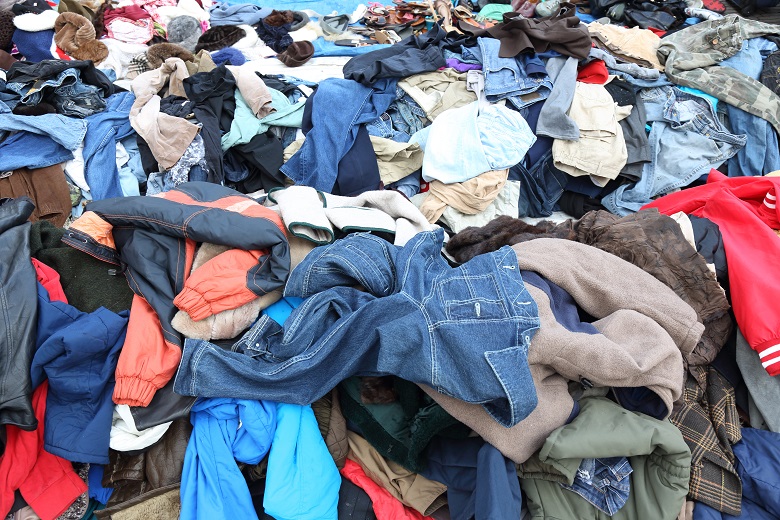
It seems all tiers of Australian government are talking about what to do with the mountains of plastic, glass and cardboard that are being stockpiled because overseas markets have closed and the fact we do not have home grown recycling solutions to deal with these growing issues, writes ADRIAN JONES.

But what about textile waste?
The latest statistics show that Australia ranks number two in the world for textile disposal and the average Australian buys about 27kg of textiles per head per year and, amazingly, disposes of about 23kg per person per year.
Not all of this goes straight into landfill. People generously donate clothes to their favourite charities, who endeavour to sell them, or it is collected by commercial collection companies and the poor-quality product is exported and ends up in landfill either here or offshore.
More than 70 per cent of the world’s clothing, and we made over 100 billion garments last year, are made of plastic, using a chemical process and made from oil. We produce 40 million tonnes of polyester for garments each year and currently recycle none of it. All recycled polyester comes from drinking bottles, not from clothes.
This is a huge problem for the environment as polyester can take over 200 years to decompose and, even then, can cause problems.
Fast fashion and mass consumption
Given all of this, why isn’t the large and growing problem of textile waste in Australia, driven by population growth, cheap and ‘fast fashion’ and mass consumption by all of us, at the forefront of government bodies’ agendas?
The traditional models, which are to bury and burn, look increasingly unattractive to the consumer, and the introduction of landfill levies, makes businesses aware of their external costs, and so look to reduce their landfill exposure.
Export markets are closing, and prices are dropping. There is a perfect storm of micro and macro challenges, which mean the traditional methods of textile recycling will not cope with the future needs of ratepayers, consumers and businesses.
The future of textile recycling lies in the chemical separation of fabrics back into their base components, so maintaining a high value for these products and ensuring true circularity within the consumption cycle. Consumers want this, and businesses can now deliver this.
So why does the public sector need to take notice and be part of the engagement with this future business ecosystem? In my opinion there are several compelling reasons:
- The environmental impact: Government has a duty of stewardship over the land the future generations will use. No-one can seriously believe that endless consumption and the ensuing waste will lead to a good environmental output. Government needs to provide legal and policy frameworks, e.g. the mandatory procurement of recycled materials, which allow environmentally innovative companies to thrive and become the norm not the exception.
- The taxation impact: Landfill taxes are a good thing as they signal to the market the cost of waste. They are here to stay. I also believe taxpayers would be willing to pay more, over time, if the levy was transparently hypothecated towards waste mitigation policy and issue resolution. Simply raising the levy with no corresponding reduction in environmental damage will not wash with taxpayers.
- The economic impact: Recycling creates jobs and economic prosperity for regions. As our economy continues its digital transition, many old and traditional roles will disappear, and new roles will need to be created. Landfill does not create jobs, recycling facilities do, and government bodies should review its grant system to allow new, smaller recyclers to grow and provide jobs more quickly. Banks are reducing lending, waste is going up, Government needs to step up in this area and support local companies to grow.
The hard fact is there is a growing textile waste problem. There are innovative Australian companies looking to build facilities and generate jobs and local growth. By partnering with these companies, Government can accelerate their positive impact on textile waste recycling.
As the problem becomes more apparent, and technology develops, it would be very wasteful not to have these conversations now before it becomes a bigger problem.
Adrian Jones held executive positions with Myer, Next, Marks & Spencers, WH & Smith and companies behind leading labels including Sportscraft, Saba and JAG. He is co-founder of BlockTexx, a platform which looks at repurposing textile waste.
Comment below to have your say on this story.
If you have a news story or tip-off, get in touch at editorial@governmentnews.com.au.
Sign up to the Government News newsletter.